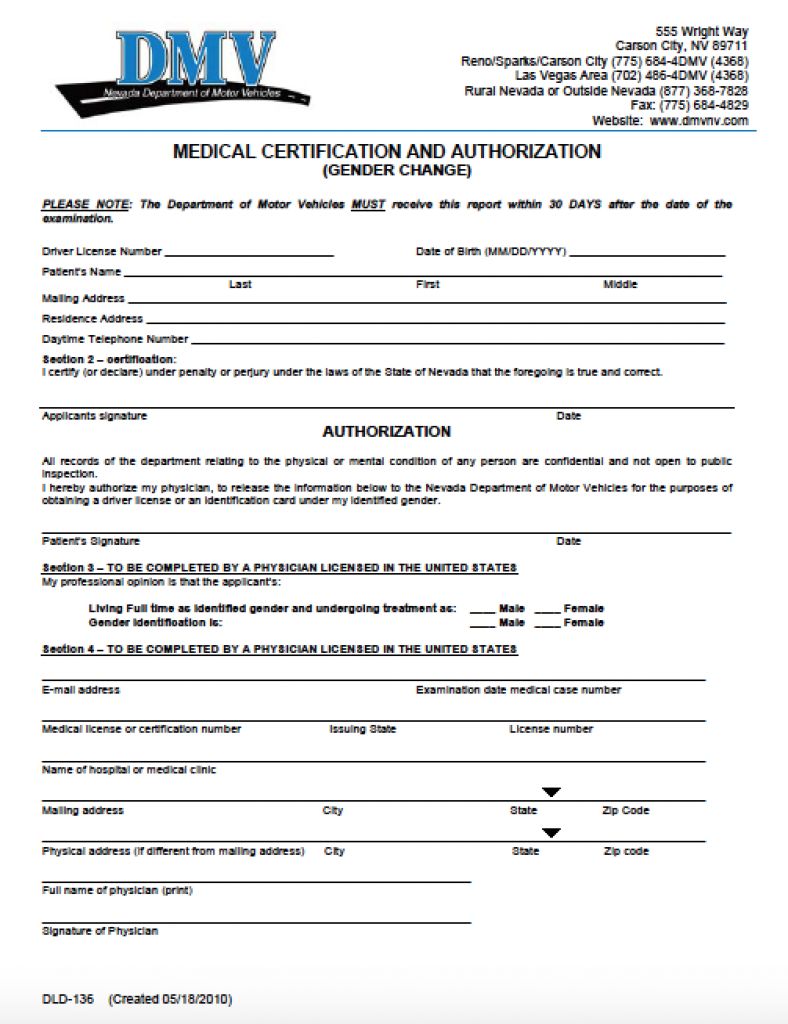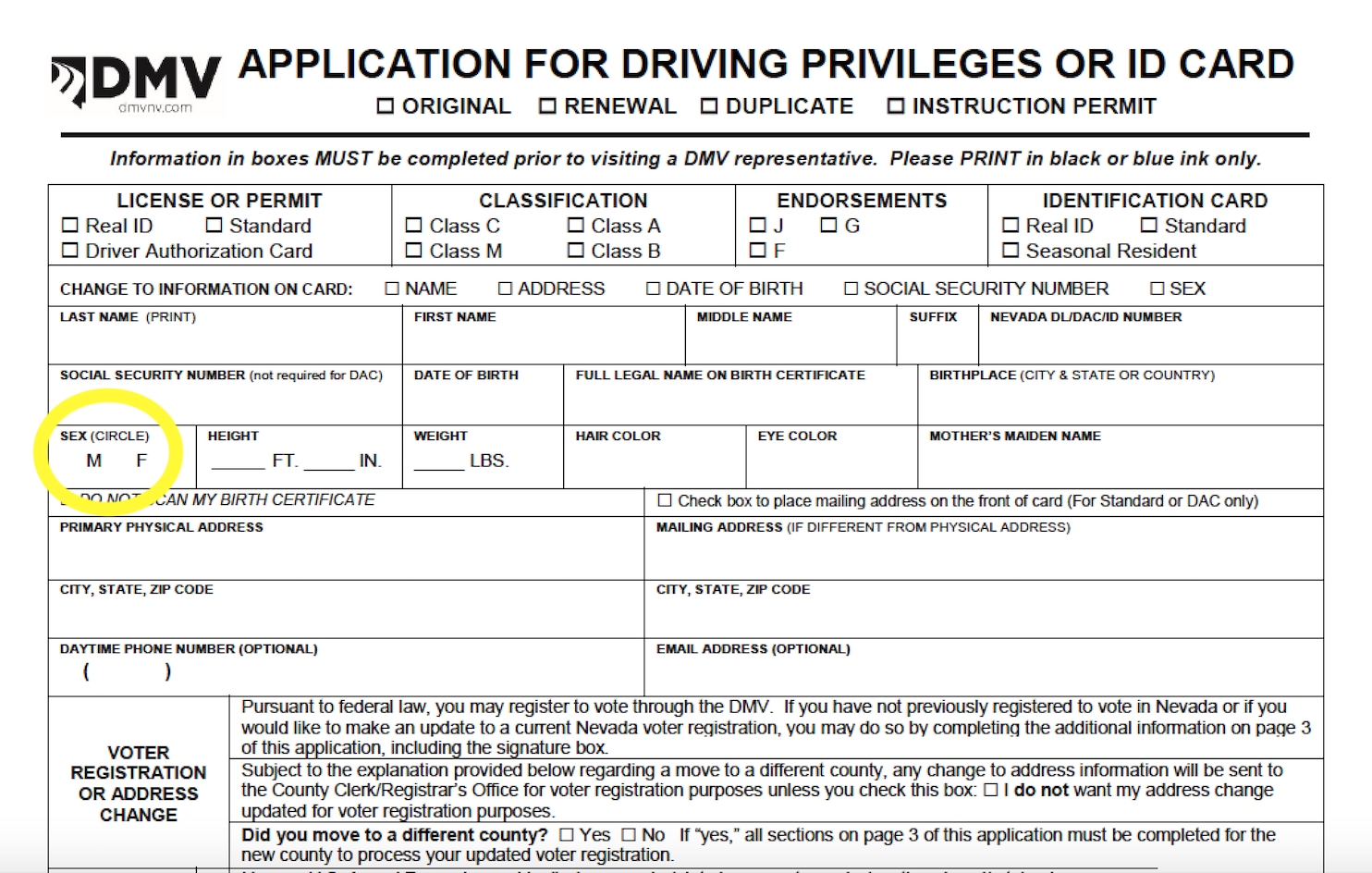14:06
News Story
A DMV victory for the trans community: What it means, what comes next
Changing the gender on your Nevada driver’s license from male to female or from female to male is now akin to changing your eye color from green to blue.
That is to say you just get to tell the DMV what it is.
No “proof” required.
This process of self-declaration quietly went into effect on May 29. Previously, someone who wanted to change the gender listed on their driver’s license or state-issued identification card had to submit an additional form filled out by a doctor declaring the applicant was “living full-time as identified gender and undergoing treatment.”
Getting that form signed was an undue hardship for trans people, argued advocates. Trans men and women sometimes had to visit multiple doctors before finding one willing to complete the form for them. That process could be time-consuming and costly, especially for trans people who lack medical insurance.
More viscerally, many within the trans community saw the form as a painful reminder of the need for outside validation.
“There is a long history of medical intervention in our lives,” says Jane Heenan, the clinical director of Gender Justice Nevada. “We were not capable of saying who we are. We have to go to the doctors and all these other people so they could make us real – make us legitimate.”

The now-outdated doctor form was required from May 2010 until last week. Prior to that, the state required surgery to be completed before someone could change their license or ID. The surgery requirement stemmed from legislation passed by the state in 2000.
The new streamlined process will make life safer for trans men and women, say advocates. Harassment and discrimination stemming from a mismatch between physical gender expression and legal documents is commonplace within the trans community. The largest survey of trans people in the United States found nearly half – 46 percent – had been verbally harassed in the past year. Nearly one in 10 had been physically attacked.
Only 11 percent reported that all of their IDs had their preferred name and gender on them. More than two-thirds (68 percent) reported that none of their IDs did.
The Nevada DMV does not keep track of the number of people who change gender with them, but the self-declaration could potentially impact thousands of residents. One study released by UCLA in 2016 estimated the number of transgender adults residing in Nevada at 12,700 – about 0.61 percent of the overall population, or a little more than the population of White Pine County. Nationally, about 1.4 million people identify as transgender – also about 0.6 percent of the population.
The Nevada DMV did not fight the change and worked closely with groups like Transgender Allies Group and Gender Justice Nevada.
According to DMV Driver Programs Manager April Sanborn, there was no opposition to the change to self-declaration when it was being discussed during the mandatory series of workshops, public hearings and hearings earlier this year. As part of that process, the DMV put together an impact statement and sent it out to numerous entities.
“We didn’t know what to expect,” she said. “We wanted (everyone) to understand what this (change) meant. We thought it might get some opposition or questions or concerns but nobody came forward.”
One thing working in their favor was the fact Nevada already has one of the most progressive policies in the country when it comes to changing the gender on state-issued birth certificates. Since 2016, the state has allowed people to self-declare their gender on their birth certificate. This means you can get your birth certificate changed without doctor’s approval.
Adds Sanborn, “If they allow it, why do we (at the DMV) need to have people jump through hoops? We felt that didn’t need to happen.”
Trans advocates are celebrating last week’s change, but they are also working on moving things forward further. Their next goal is to offer a non-binary gender option (X) on state-issued identification.
DMV representatives say they are on board with that change, too.
The reason it hasn’t happened already is the agency needs to make sure their back-end programs and those of other public entities like police departments and courthouses that pull information from the DMV can handle the change. If there are software compatibility issues resulting in agencies not being able to access the information they need, those will need to be worked through before the change can be implemented.
Sanborn expects a non-binary option to be available by the end of this year.
The American Association of Motor Vehicle Administrators, the nonprofit organization that set standards for public administrators in the United States and Canada, has identified self-declaration and a non-binary gender option as best practices. In June of last year, Oregon became the first state to do so. Other states like California have already followed suit.
Our stories may be republished online or in print under Creative Commons license CC BY-NC-ND 4.0. We ask that you edit only for style or to shorten, provide proper attribution and link to our website. AP and Getty images may not be republished. Please see our republishing guidelines for use of any other photos and graphics.




